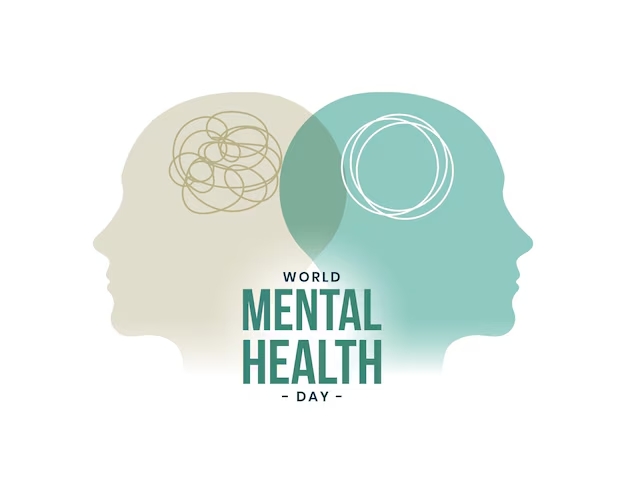The digital revolution has transformed the way we live, work, and interact with one another. While technology has brought countless benefits, it has also introduced new challenges to mental health. In a world where smartphones, social media, and constant connectivity dominate our lives, finding balance is essential for maintaining mental well-being. This article explores the impact of the digital age on mental health and offers practical strategies to navigate the challenges of a connected world.
1. Understanding the Impact of the Digital Age on Mental Health
Technology has reshaped human interaction and behavior, but its effects on mental health are complex. Here are some of the key ways the digital age influences our psychological well-being:
- Increased Stress: The pressure to be constantly available and responsive can lead to heightened stress levels.
- Social Comparison: Platforms like Instagram and Facebook encourage comparisons, which can harm self-esteem.
- Information Overload: The constant influx of news and notifications can overwhelm our cognitive capacities.
- Sleep Disruption: Excessive screen time, especially before bed, interferes with sleep quality.
2. The Double-Edged Sword of Social Media
Social media is a powerful tool for connection but can also contribute to mental health struggles:
- Positive Aspects:
- Facilitates communication and social support.
- Provides a platform for self-expression and creativity.
- Raises awareness about mental health issues.
- Negative Aspects:
- Fosters unrealistic standards through curated content.
- Encourages addictive behaviors with infinite scrolling.
- Increases feelings of loneliness and isolation in some users.
Understanding both sides of social media’s influence can help us use it more mindfully.
3. Recognizing Signs of Digital Burnout
Digital burnout is a growing concern in today’s always-on culture. Symptoms include:
- Mental Fatigue: Difficulty concentrating or making decisions.
- Physical Symptoms: Headaches, eye strain, and disrupted sleep patterns.
- Emotional Exhaustion: Feelings of irritability, frustration, or apathy.
Recognizing these signs early is crucial for taking corrective action.
4. Setting Healthy Boundaries with Technology
Creating boundaries is essential for reducing the negative impact of technology. Here’s how:
- Designate Tech-Free Zones: Keep devices out of bedrooms and dining areas.
- Set Screen Time Limits: Use apps to monitor and limit daily usage.
- Schedule Downtime: Plan regular breaks from screens to recharge mentally.
5. Practicing Digital Mindfulness
Mindfulness can help mitigate the adverse effects of digital life. Strategies include:
- Intentional Usage: Before reaching for your phone, ask yourself why you’re using it.
- Single-Tasking: Focus on one task at a time instead of multitasking.
- Gratitude Journaling: Reflect on positive digital interactions that add value to your life.
6. Building a Supportive Online Community
The internet offers opportunities to form meaningful connections. Tips for creating a positive online environment:
- Join Niche Communities: Find groups that share your interests and values.
- Engage Authentically: Be genuine in your interactions to foster real connections.
- Avoid Toxic Spaces: Mute or unfollow accounts that negatively impact your mental health.
7. Managing Information Overload
In the digital age, it’s easy to feel overwhelmed by the sheer volume of information. To manage this:
- Prioritize Sources: Follow trusted and relevant information channels.
- Practice Digital Decluttering: Regularly clean up your email inbox and social media feeds.
- Schedule Information Breaks: Allocate specific times for consuming news and updates.
8. Leveraging Technology for Mental Health Support
While technology can challenge mental health, it also offers solutions. Consider these tools:
- Meditation Apps: Apps like Calm and Headspace provide guided meditation sessions.
- Teletherapy: Access professional mental health support through virtual platforms.
- Mood Trackers: Use apps to monitor your emotional well-being and identify patterns.
9. Encouraging Offline Activities
Balancing online and offline life is critical for mental well-being. Offline activities to prioritize include:
- Physical Exercise: Engage in activities like jogging, yoga, or team sports.
- Creative Hobbies: Explore painting, writing, or playing a musical instrument.
- Quality Time: Spend uninterrupted time with loved ones.
10. Educating the Next Generation
As digital natives, children and teenagers face unique challenges. To support their mental health:
- Model Healthy Behavior: Demonstrate mindful technology use in your own life.
- Teach Digital Literacy: Help them discern reliable sources and navigate online spaces safely.
- Encourage Open Dialogue: Foster conversations about their online experiences and feelings.
Conclusion
The digital age presents both opportunities and challenges for mental health. By adopting mindful habits, setting boundaries, and leveraging technology responsibly, we can navigate this connected world without compromising our well-being. Remember, balance is key — embracing both the digital and the offline worlds in harmony can lead to a healthier, happier life.
Take charge of your mental health in the digital age, and transform technology into a tool for growth rather than a source of stress.



